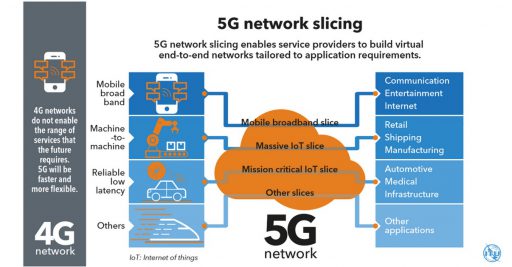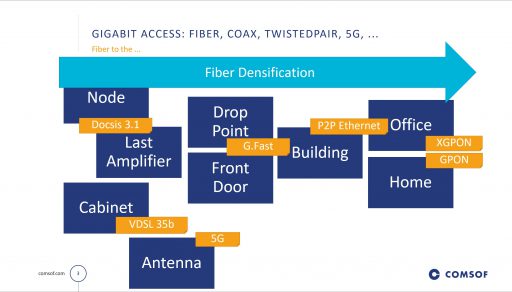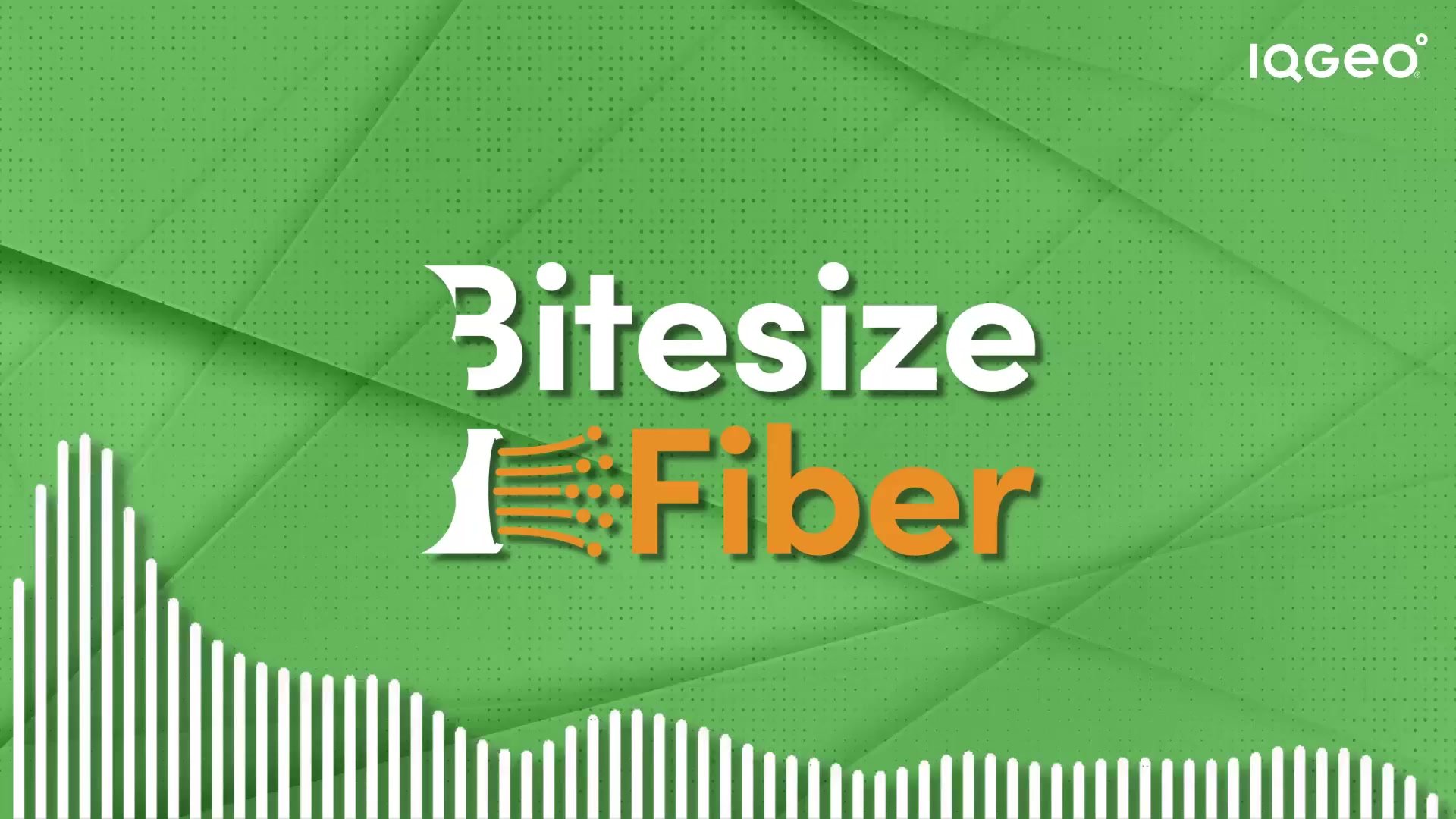5G network slicing: an interesting business opportunity
An interesting aspect of 5G technology is the possibility of network slicing, which was not possible with 4G. Network slicing gives operators the option to allocate portions of their network to specific user cases. For connected cars for example, smart homes and factories, or the smart energy grid. Every use case gets their own set of required specifications, such as connectivity, speed, and capacity.
In other words, network slicing lets you create multiple virtual networks within the physical infrastructure. And since the revenue from mobile subscriptions is declining, 5G opens up a new revenue stream: operators can target big industry players as customers.
For instance, an autonomous car will rely on V2X or vehicle-to-anything communication. This requires low latency, but not a high throughput. If you are watching a streaming service while the car is driving, you will need a high throughput, this service is also vulnerable to latency. It is possible to deliver both services over the same common physical network, on different virtual network slices.

Make a dedicated decision to cut off copper and go for fiber
It is a discussion we have heard many times over. Do not deploy a fiber optic network and then offer copper network speeds. Having gigabit speeds is important for future technologies such as AI and IoT. Customers and businesses will demand a quality service.
Take the bold step to swap out your outdated copper infrastructure for future-proofed fiber optics and offer your customers fiber speed packages, allowing them to fully utilize the high-speed highway you've built. Settling for anything less than high-quality speeds is simply not an option for today's tech-savvy consumers.
Creating a business case to upgrade to fiber
There are different technologies available which offer gigabit speeds today, but fiber to the home (FTTH) should be the preferred technology. G.Fast, Docsis 3.1, 5G FWA can all be part of your toolbox, and smart operators choose the best technology that fits their business case in each geographic area that they serve.
Do take into account all costs when choosing a technology. Old copper networks have high maintenance costs and having active equipment in the field also influences the OPEX.
Whenever additional fiber is needed, whether to reduce the length of the copper loop, extend fiber further into a coax network, or enhance the wireless network density, operators must strategically plan for the future by incorporating extra fibers to facilitate FTTH in the long term.
Building a network is not just a task, It takes it's a craft. It's crucial to properly educate and train the engineers responsible for the planning, design, construction, and upkeep of the network. Additionally, enlightening your clients on the transformative benefits of gigabit speeds for their daily lives and businesses is key.
Fiber to the Everything: the right architecture for every area
A fiber-optic network is by far the most future proof solution to cope with present and future bandwidth demands. But there are so many architectures, and as every area and budget is different, every community deserves the most optimal solution.

That is where automated software such as Comsof Fiber can be of assistance. This GIS-based planning and design tool can cope with almost every topology. Does your area have a quality copper or coaxial network and other infrastructure you wish to (partly) reuse? Are you going to start deploying a 5G network or will you rollout an FTTH and FTTB network? Do you wish to rollout a GPON or a P2P network? Is the area rural, or urban? Or do you want to combine different architectures?
Comsof Fiber is the only real fiber to the everything planning and design software that can cope with these challenges. Discover more about the benefits of an automated planning and design process and take your fiber planning and network management to a new level of efficiency that enables you to rapidly deploy and manage your fiber networks. Talk to our industry experts.
Similar articles:


 Previous
Previous







